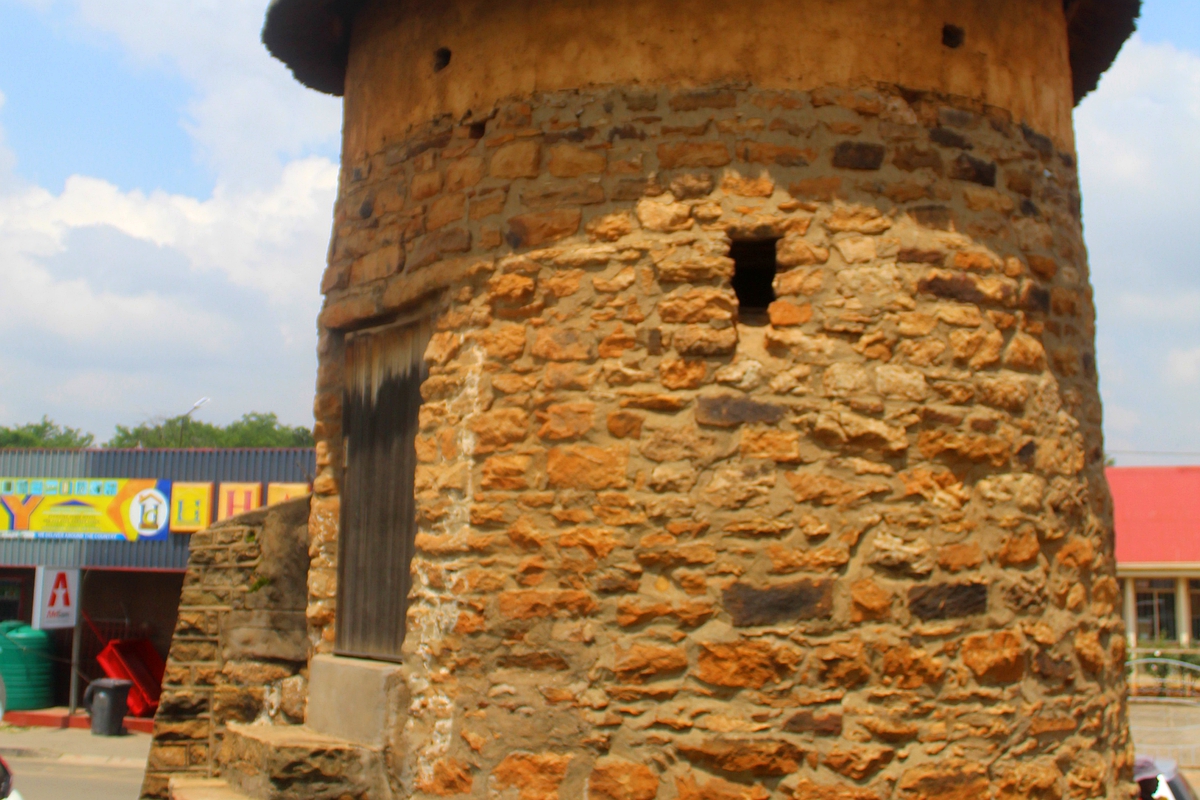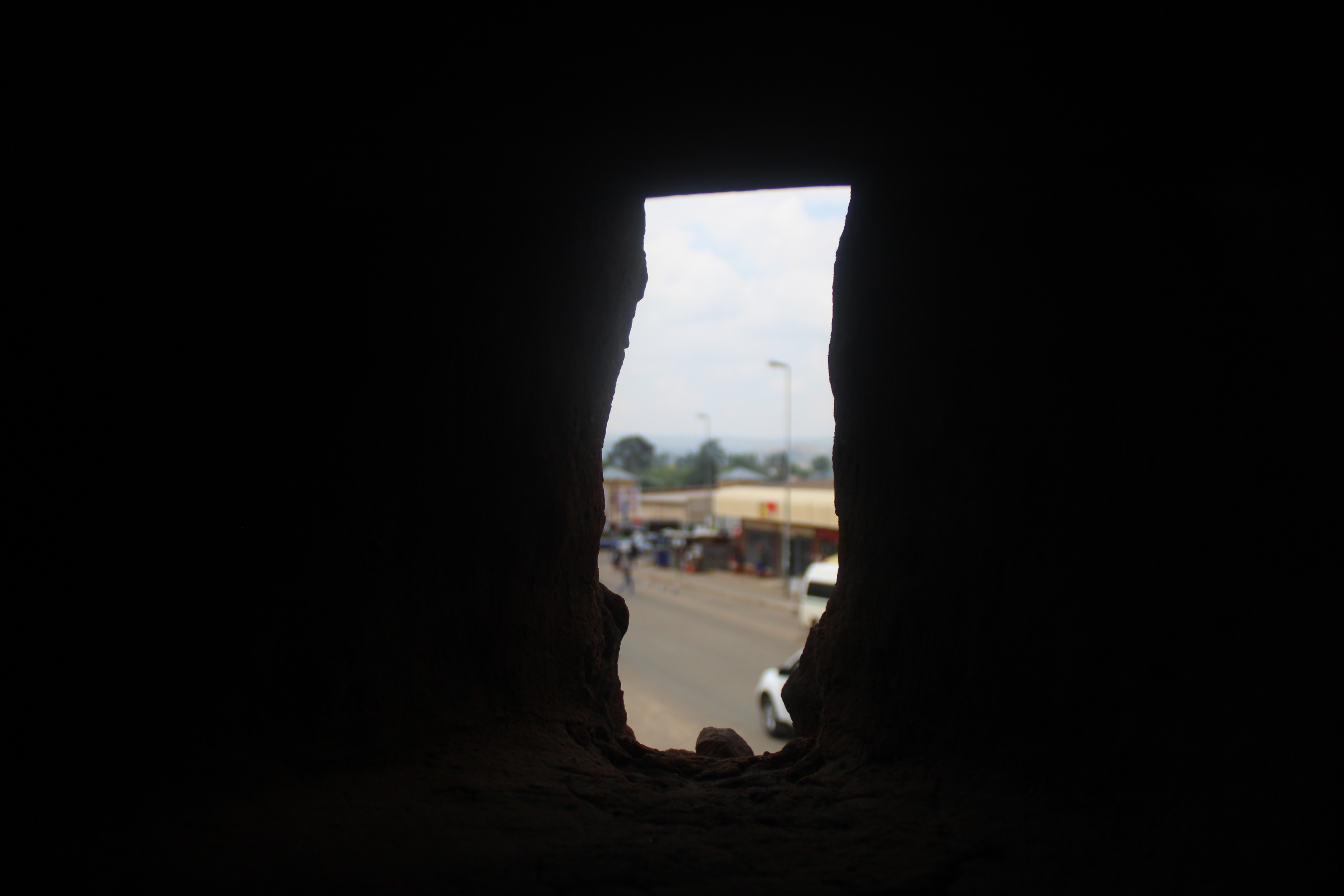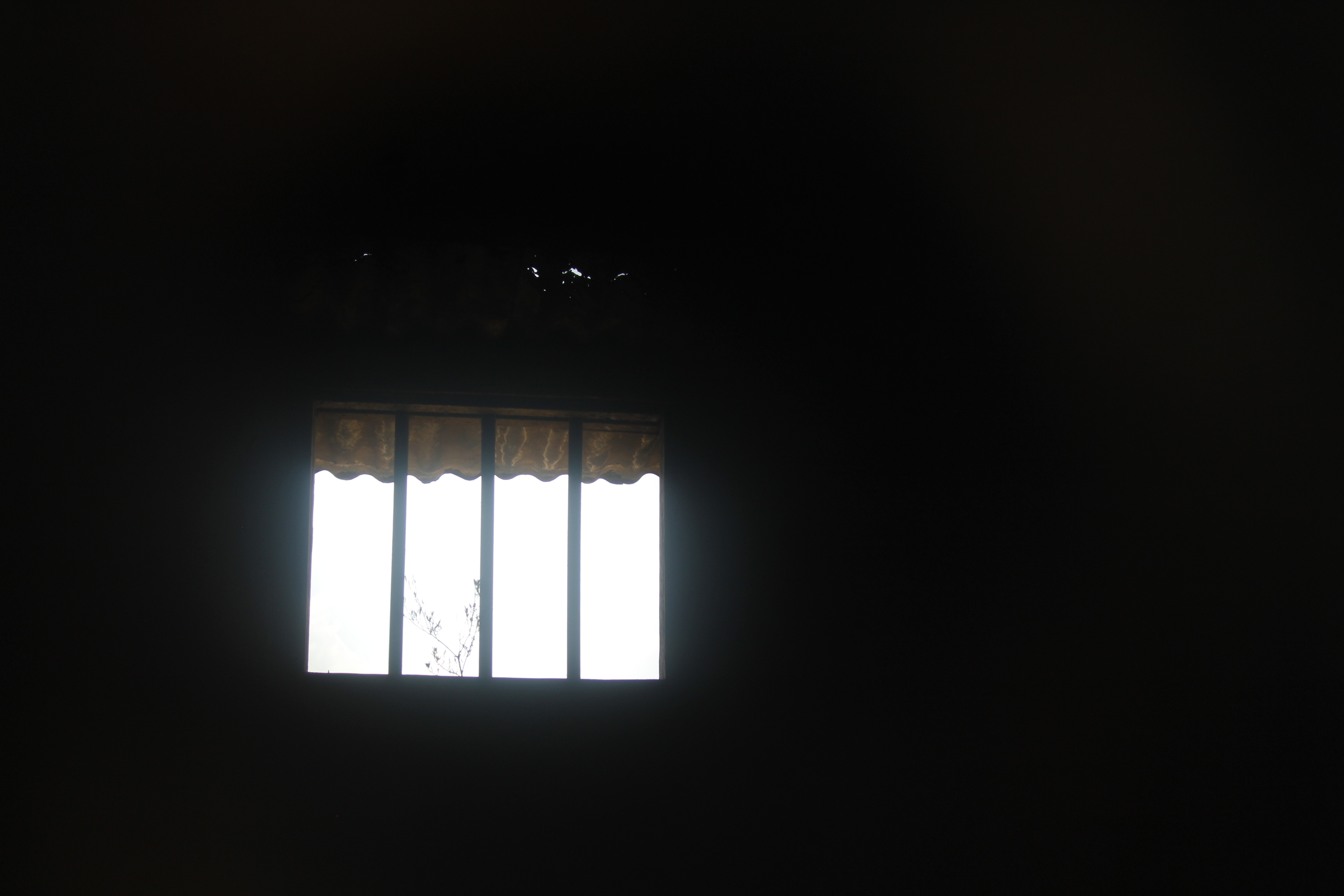It’s a gloomy Tuesday morning with dark clouds hanging on the skies of the small town of Teta-teyaneng (TY). Rain is on the weather forecast; but I am determined to travel to Hlotse, in the Leribe district to see the historic Major Bell’s tower.
travel
Nov. 26, 2022
THE NOMAD – BY MOHAU SERABELE
4 min read
Hlotse’s iconic wartime tower still standing tall

The iconic Major Bell’s Tower in Hlotse
Story highlights
After a one hours’ drive north, from TY, I came to Hlotse and meet my tour guide Mr Rethabile Morake, who immediately takes me on a walk down the street to the iconic colonial tower.
The buzz and hype in the streets reflect Hlotse as a typical town in Lesotho. People line the streets selling anything from fruits to second-hand shoes, but Mr. Morake is quick to mention that Hlotse has a rich history which makes it a wonderful location to visit.
When we finally arrive at the tower, Morake points to the old stone and cement structure and says it is just one of the many sites of historical and tourist’s importance in the town.
The structure is about 3.5 - 4 metres high and has a thatched roofing like the Basotho hut. It is a round, narrow structure with stairway leading to an old wooden door leading into the interior of the tower.
There is no furniture in the tower. Its dark interior is illuminated by very thin streams of light flowing in through the three narrow windows openings up on the walls. The mud plastered wall in the round tower still look fresh and well intact. This is Major Bell’s Tower.
Located in the middle of Hlotse town, it looks unique among the modern buildings. It was built by the British colonialists during the Gun War also known as the Basotho Rebellion which took place between 1880 and1881. The tower derives its name from a British military officer Major Charles Harlard Bell, he was called Majorobela by the local people.
Mr. Morake informs me that the tower was used as a bunker by Major Bell during the Gun War. The battle was triggered by a directive given by the British Colonialists from the Cape that Basotho should surrender their guns. This caused a split among the Basotho, some agreed to surrender the guns while others refused. So British troops were sent in to disarm the Basotho who were holding on to the guns. As a result, numerous battles were fought in various locations in the country, including Ha Ramokoatsi, Matsieng and Hlotse among others. It was during the Hlotse battle that Major Bell constructed and used this iconic tower to shield himself from the Basotho gun fires.

A view of Hlotse town from inside the tower
Enjoy our daily newsletter from today
Access exclusive newsletters, along with previews of new media releases.

A view from behind the bars of the old prison building in Hlotse
Stepping inside the tower generates mixed feelings. I can’t help but imagine the fear that Major Bell could have felt trapped inside that thin structure in the middle of a war. I also wonder how it might have felt like firing at the Basotho people from such a small space.
But as my tour guide suggested, the tower became a useful and safe space for the British.
A few meters away from the tower, the guide takes me to yet another old and iconic building. It is a two-roomed structure made of stones and cement. The white paint around the building is crumbling and falling.
This, according to Mr. Morake was used as a detention centre for those captured during the war. “According to history, Major Bell kept the prisoners of war in this building,” he says.
The two wooden doors leading into the prison cells still stand and the prison bars on the high windows are still intact and seemingly strong.
Following the war Major Bell stayed on in Hlotse becoming its administrator and first magistrate and probably continued to sentence and lock up people in this small building.
It is outside this prison where my short tour in Hlotse ends. The old prison and Major Bell’s Tower are close to each other, which makes them convenient to visit. Their proximity also adds value and meaning behind the rich wartime history of Hlotse.
The site is conveniently collated within the heart of Hlotse and is closer to a hotel, two banks and a hospital. There are also isolated hawkers selling various items including food.
As I turn my back on Hlotse, I quickly realise that the town was built on the battle ground. Walking through the streets of Hlotse is like walking through a battlefield of the 1880s. The streets of Hlotse were once a site for a fierce battle that could have determined the very independence and existence of the Kingdom of Lesotho as a sovereign state. This is what makes it an exciting place to visit.
Tailored for you



